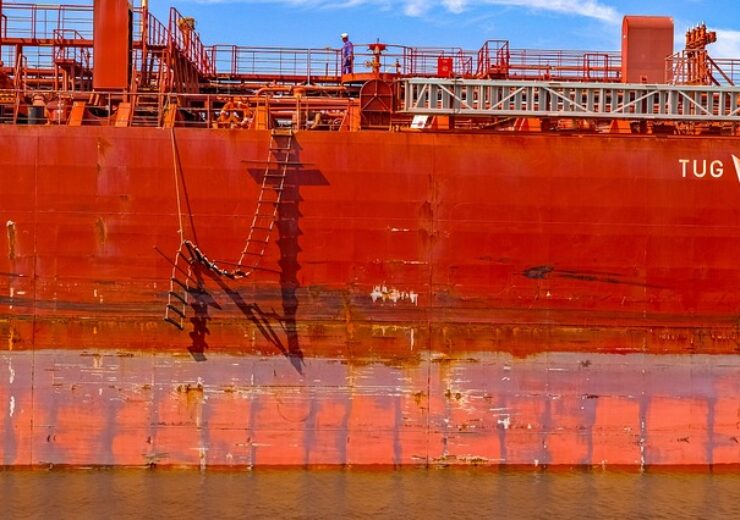The feed gas will be liquefied to produce up to 350 Tonnes per day (210,000 gallons per day) of LNG, which can fuel approximately 125 rail locomotives or 215 large mine haul trucks (150 Tonne haul capacity)

Condor receives feedgas allocation for LNG project in Kazakhstan. (Credit: djedj from Pixabay)
Condor Energies Inc. (“Condor” or the “Company”) (TSX:CDR), a Canadian based energy transition company is pleased to announce that it has received a natural gas allocation (the “Gas Allocation”) from the Government of the Republic of Kazakhstan (Kazakhstan”). The Gas Allocation will be used as feed gas for the Company’s first modular liquefied natural gas (“LNG”) production facility.
The feed gas will be liquefied to produce up to 350 Tonnes per day (210,000 gallons per day) of LNG, which can fuel approximately 125 rail locomotives or 215 large mine haul trucks (150 Tonne haul capacity). The CO2 emission reductions associated with using this LNG volume to displace diesel fuel equates to removing over 31,000 cars from service annually.
The Company has also acquired 12 hectares of industrial land where the first modular LNG facility will be constructed. Front-end engineering and design is complete and detailed engineering will commence shortly. Discussions are underway with end-users to confirm LNG volume commitments and the Company is reviewing project funding alternatives before proceeding with construction.
Don Streu, President and CEO of Condor commented: “We are very happy and appreciative to receive this Gas Allocation that advances our vision of producing Kazakhstan’s first LNG. This is a significant milestone as Kazakhstan has been experiencing natural gas shortages, which was impacting our ability to secure a long-term LNG feedstock gas supply contract.
Our LNG initiative fully supports the Government’s strategy to materially expand the Trans-Caspian International Transport Route (“TITR”), which links a major Asian trade route with Europe. Our LNG can be used as a domestically produced low carbon fuel as a substitute for diesel to address the increased usage of rail locomotives and transport trucks between China and the Caspian Sea, and the marine vessels used to cross the Caspian Sea. Given the geo-political situations in Russia and the Middle East, the TITR is even more vital to expedite timely trade and transportation between Asia and Europe. Condor is working closely with Kazakhstan’s national railway and marine companies to implement an LNG solution in 2025.
Our LNG initiative also supports the Government’s strategy to implement technological transformations for decarbonization to achieve the country’s net-zero carbon goal as per its Strategy on Achieving Carbon Neutrality by 2060 adopted in 2023.”
CONDOR’S MODULAR LNG PROJECT
Condor is developing Kazakhstan’s first Liquified Natural Gas (“LNG”) facilities and will produce, distribute, and sell LNG to offset industrial diesel usage. Applications include rail locomotives, long-haul truck fleets, marine vessels, mining equipment, municipal bus fleets, agricultural machinery, and other equipment with large diesel engines. These applications have all successfully used LNG fuel in other parts of the world.
The Company is implementing an LNG liquefaction technology that was originally developed by the United States Department of Energy. The “modular” nature of this technology will allow Condor to ‘right-size’ LNG production facilities in various regions of Kazakhstan. These LNG facilities will be designed and configured to match production with local demand and are scalable to ensure optimal efficiencies for LNG deliveries to end-users.
Conventional full-scale LNG plants are complex, expensive, and require construction times of five or more years before production commences. Costing upwards of US$10 to $15 billion, they are generally constructed at locations that support export sales of LNG via marine tankers.
Conversely, modular LNG plants have significantly smaller footprints and are decentralized, providing the ability to ‘localize’ LNG production and distribution. Modular plants are efficient, cost effective and can be tailored to multiple industries and end-users. They can be built quickly and are relatively inexpensive compared to the larger export-focused terminals, with construction timelines of only 12 to 18 months from design to first production. The scalability component of modular plants is also critical when establishing an emerging market, where a conventional full-scale LNG facility would face significant near-term cash flow and operating cost challenges.
Source: Company Press Release
